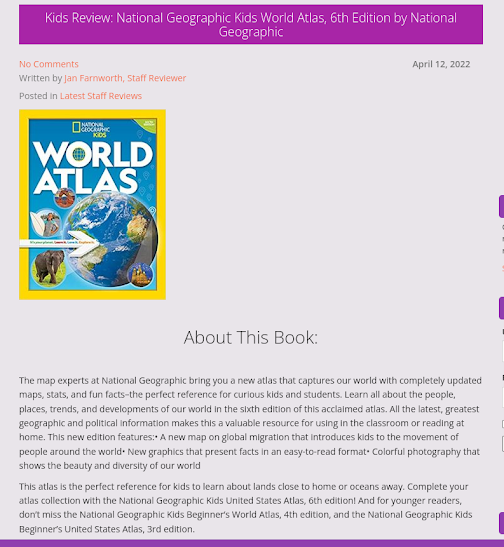Databases
As I used the UBC catalogued, I realized that my search was limited by my ability to elaborate on a topic which is similar to how students experience searching too. Using Google for searches doesn't require too much background knowledge. You can put one word that relates to the subject and Google will give you results. However, we need to be careful because Google gives a lot of false positive results making you think you can get a lot of information quickly but it doesn't always mean that it is the information you need. When searching in databases, you have to figure out the right wording for the database to retrieve the right information. This process can be challenging for students. Therefore, we need to make sure that we scaffold this process by helping students with getting some background knowledge before searching.
Encyclopedias
Berinstein mentions in the article The Kid's All Right (And So's the Old Man): "Wikipedia's users are potentially everyone under the sun". We need to remember these credentials when teaching our students and be prepared to arm them with the right tools to sort out these sources. It's undeniable that our students will and are using free-citizen built encyclopedias (Wikipedia). This is not a bad thing. Harris states that studies have shown that Wikipedia "is reasonably accurate as a general knowledge source". It's a great place to start but serious research projects cannot cite general knowledge encyclopedias. Students will still need to get information from more specialized, accredited sources!
As stated above, we need to teach them to evaluate the Wikipedia page by looking at other sources to confirm their new knowledge. Harris suggests that students need to have at least 3 sources to verify their research.
Dictionaries and Thesaurus
I believe that maintaining print versions of Dictionaries and Thesauri are important because:
- not all students have access to technology from their classrooms
- classrooms share devices
- not all students have cellphones
Placement of the Dictionaries and Thesauri in the classrooms and Library Learning Commons (LLC) is critical to improving accessibility. The classroom or place where students do their work would be the best home for these resources since students need fast and quick access to them.
Atlases and Geographical resources
Finding an acceptable currency is harder than one would imagine. Especially when Riedling suggests a shelf life of 5 years. Depending on what you need the resource for will determine whether the TL suggests an online source or a print source. A print atlas source demands that students know how to use indexes. The BC Digital Classroom resources are curated by specialists and are updated in real time. Both digital and print sources are necessary for the LLC!
Conclusion
This term consisted of a lot of new material. It wasn't that I did not know about what we were learning at all. It was that I hadn't considered the implications of how they affect the students and teachers. For example, I hadn't considered that Google searches only access 10% of the information on the web. This is why teaching students and teachers to use our digital resources is so much more important. Our digital resources provide information outside the 10%. I also never considered how quickly maps and geographical resources become outdated (every 5 years). I'd rather have a few current resources than a bunch of outdated ones. Finally, I am motivated to reinstate a reference resource section in the LLC. I'd like to take time to focus and teach teachers and students how to use these resources and benefit from their ability to use them.
Citations
Armand Valdes. Mashable Explains the Deep Web?. YouTube. 17 Mar. 2014. https://www.youtube.com/watch?v=_UOK7aRmUtw
Harris, C. (2007). Can we make peace with Wikipedia? School Library Journal, 53(6), 26.
Riedling, A. M., & Houston, C. (2019). Reference Skills for the School Librarian: Tools and Tips, 4th Edition. Libraries Unlimited.




















